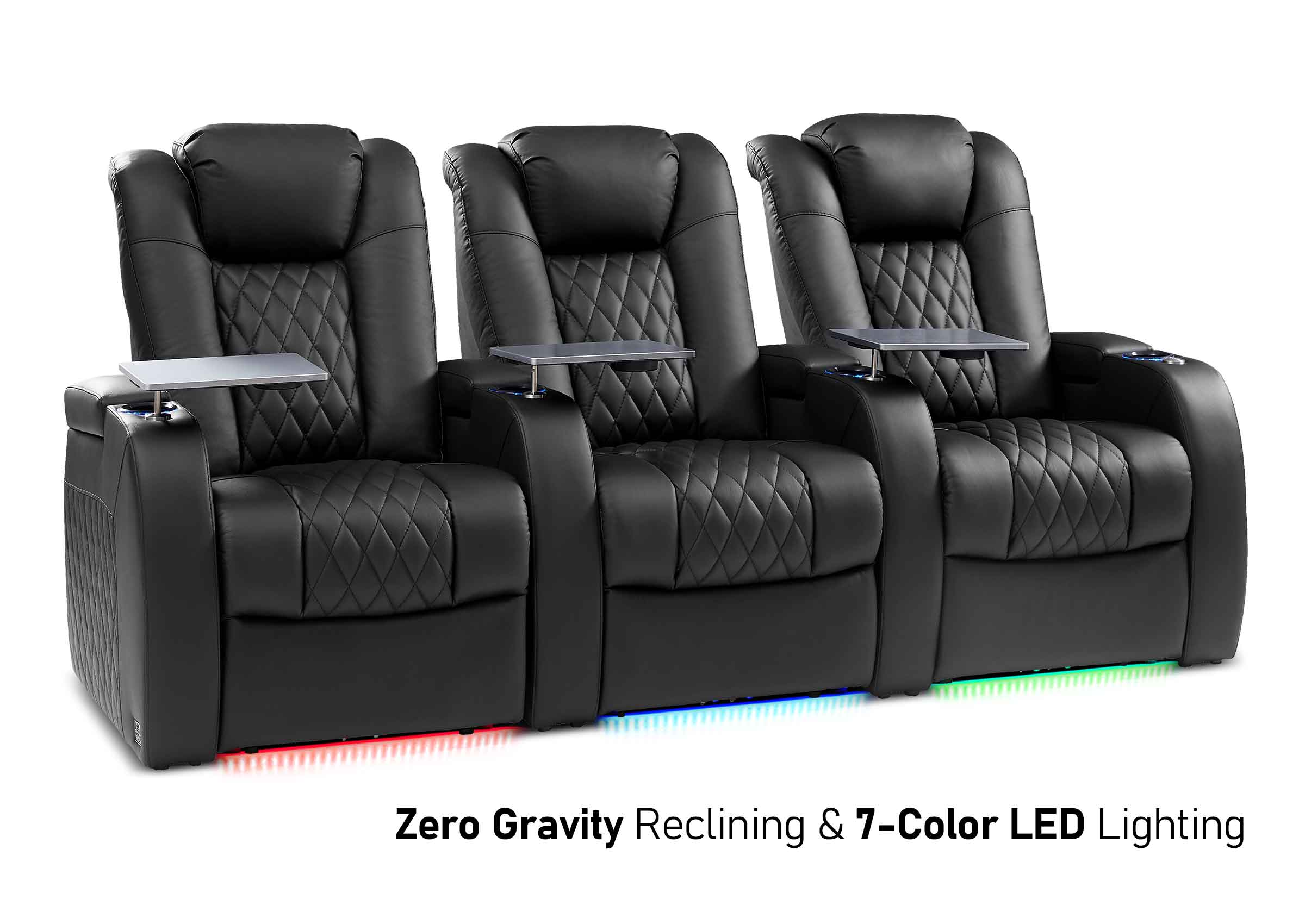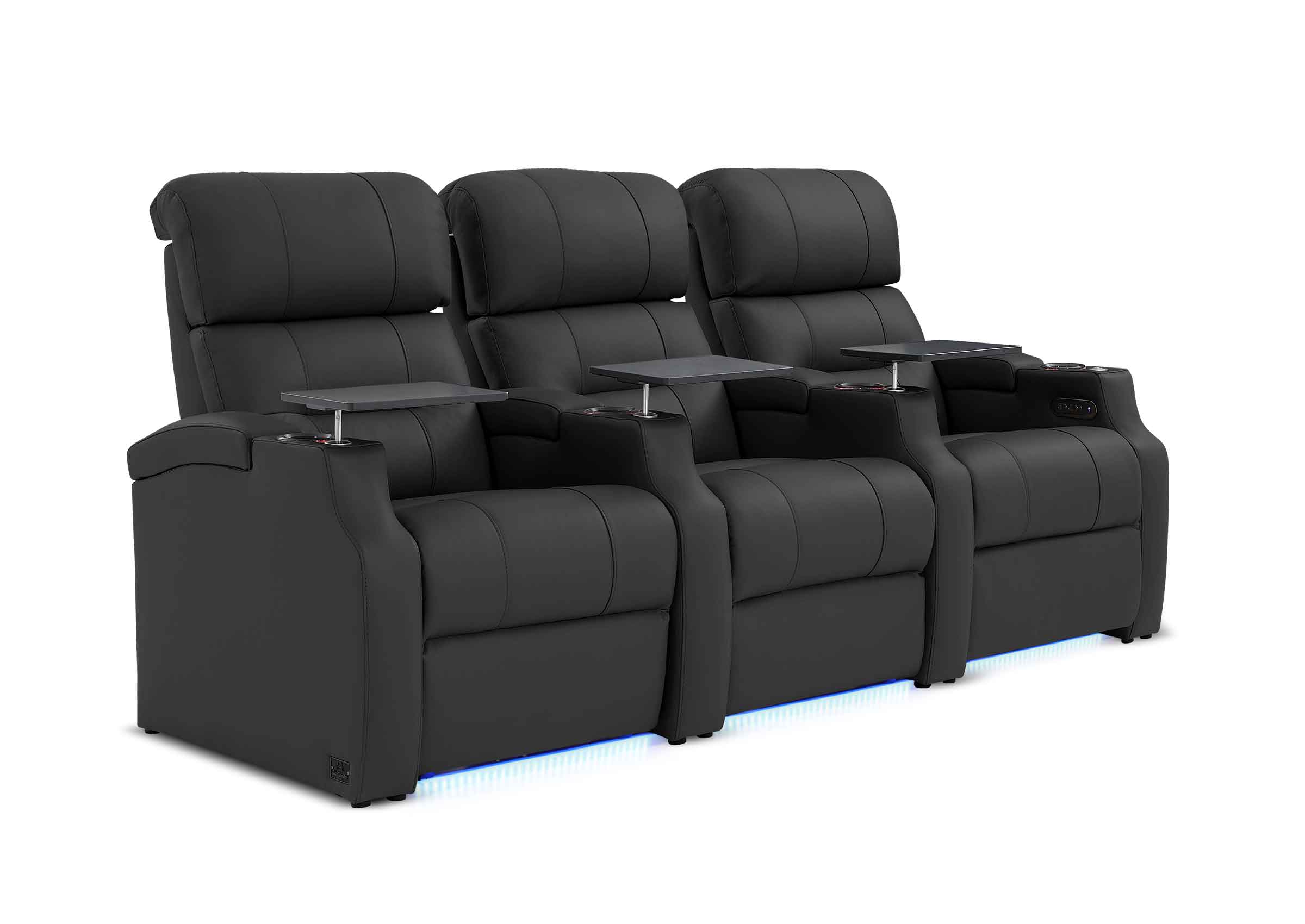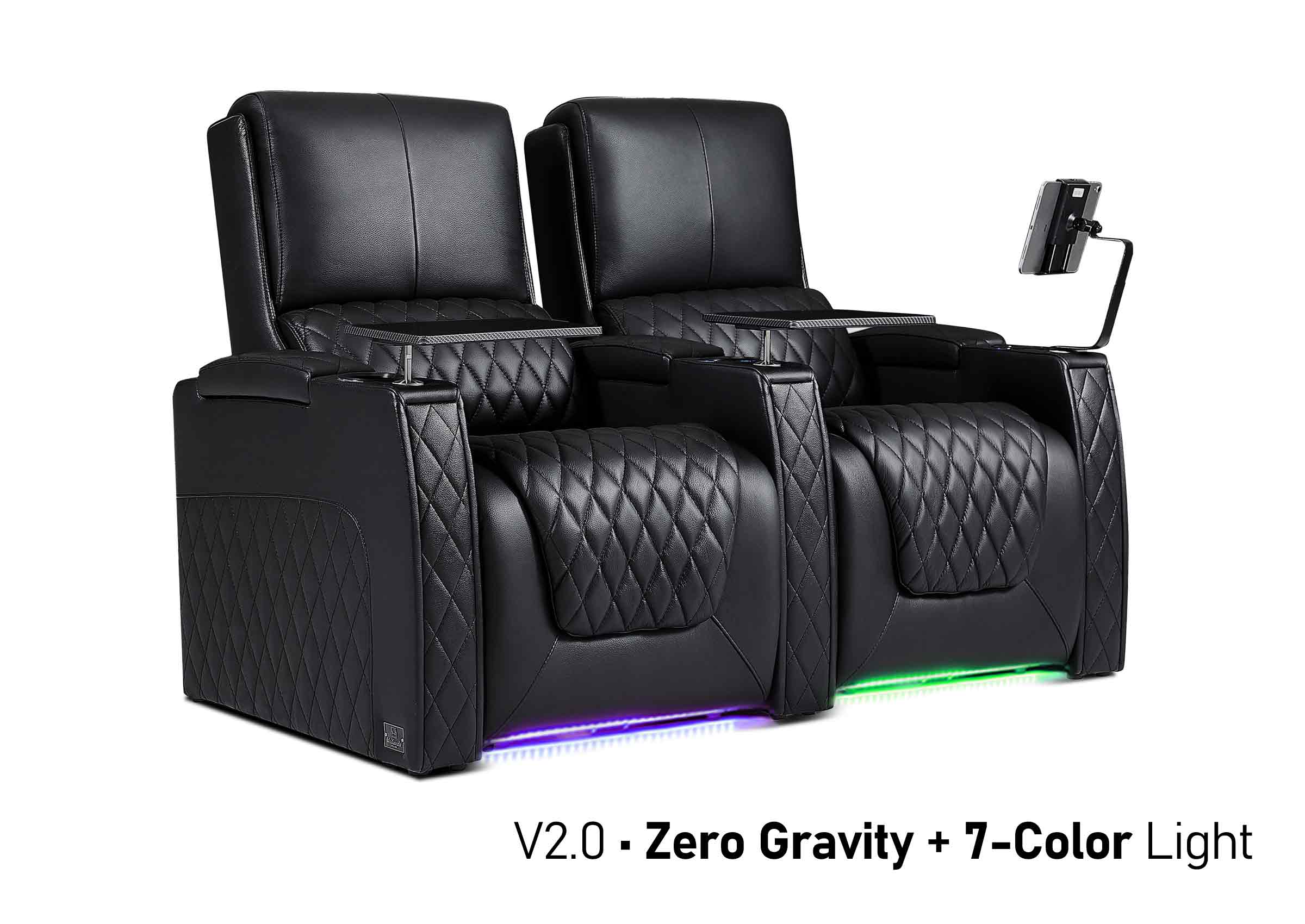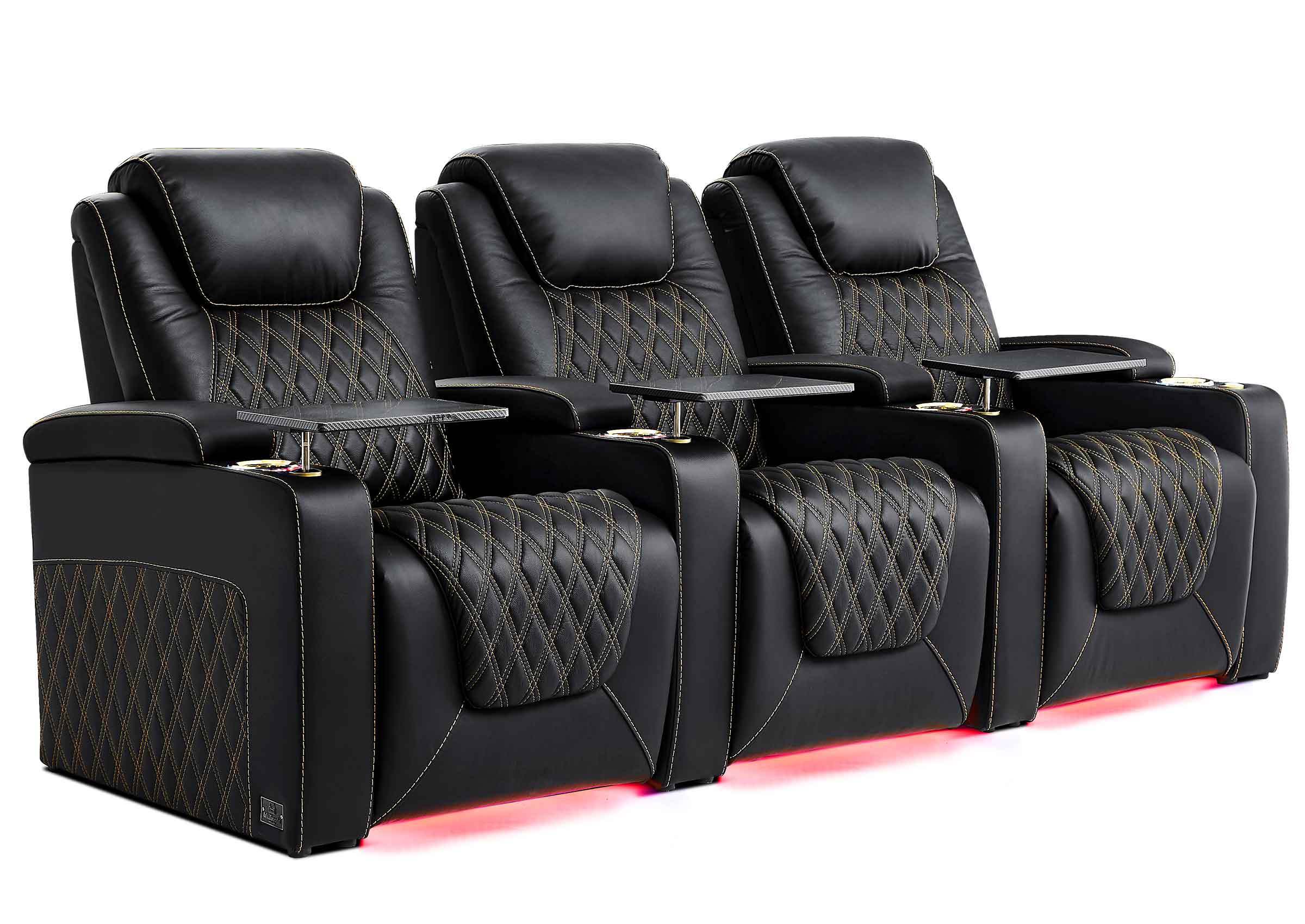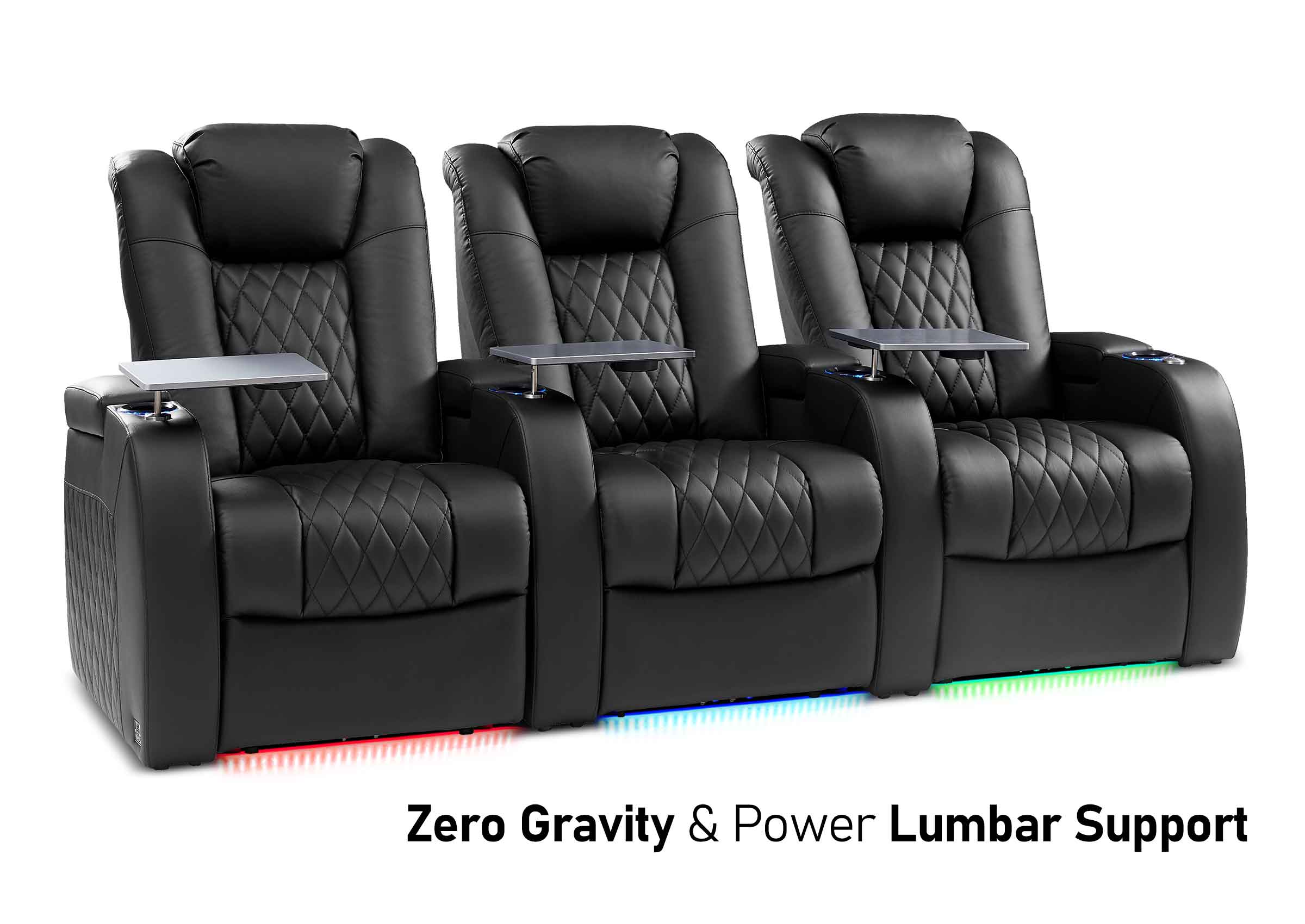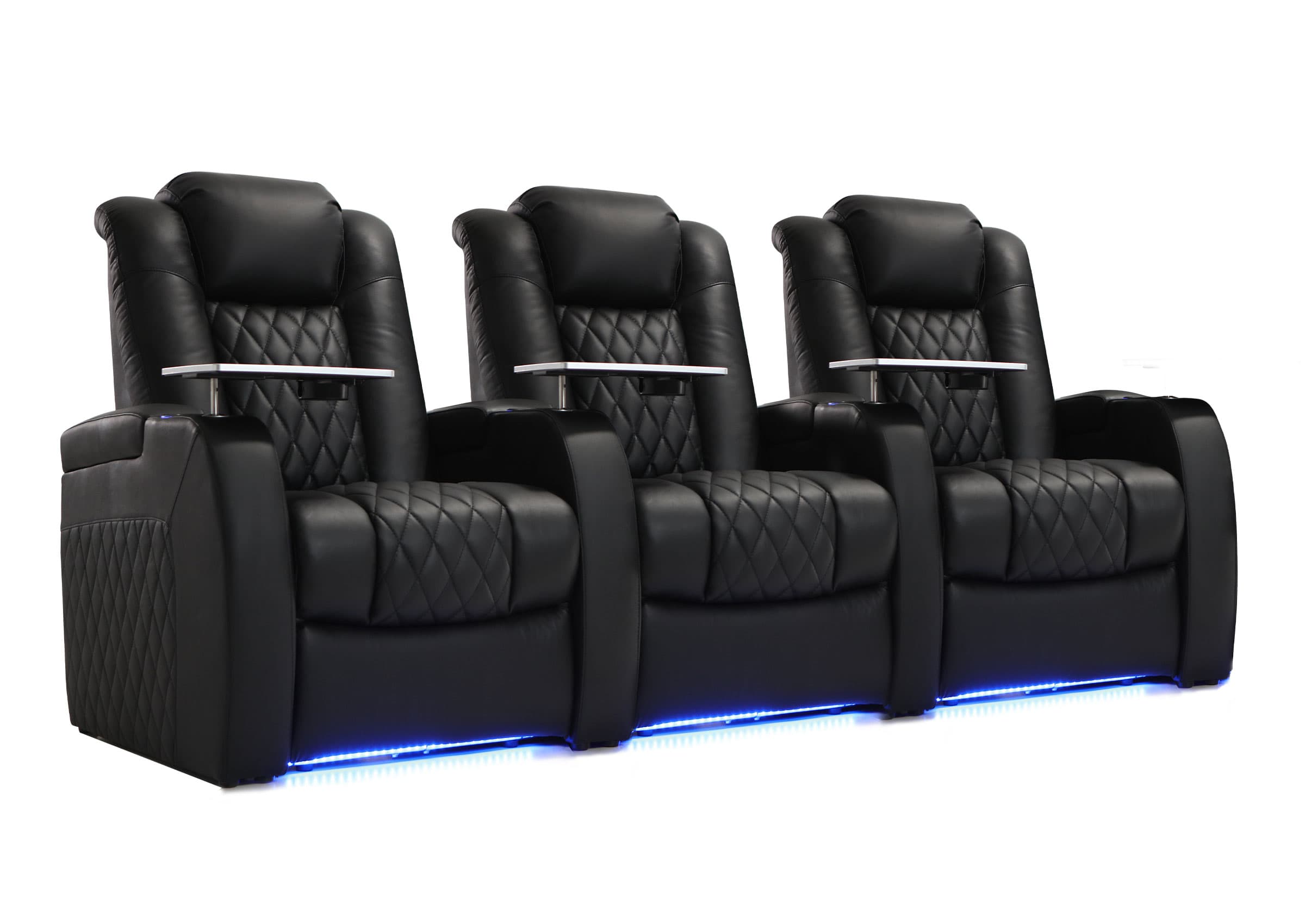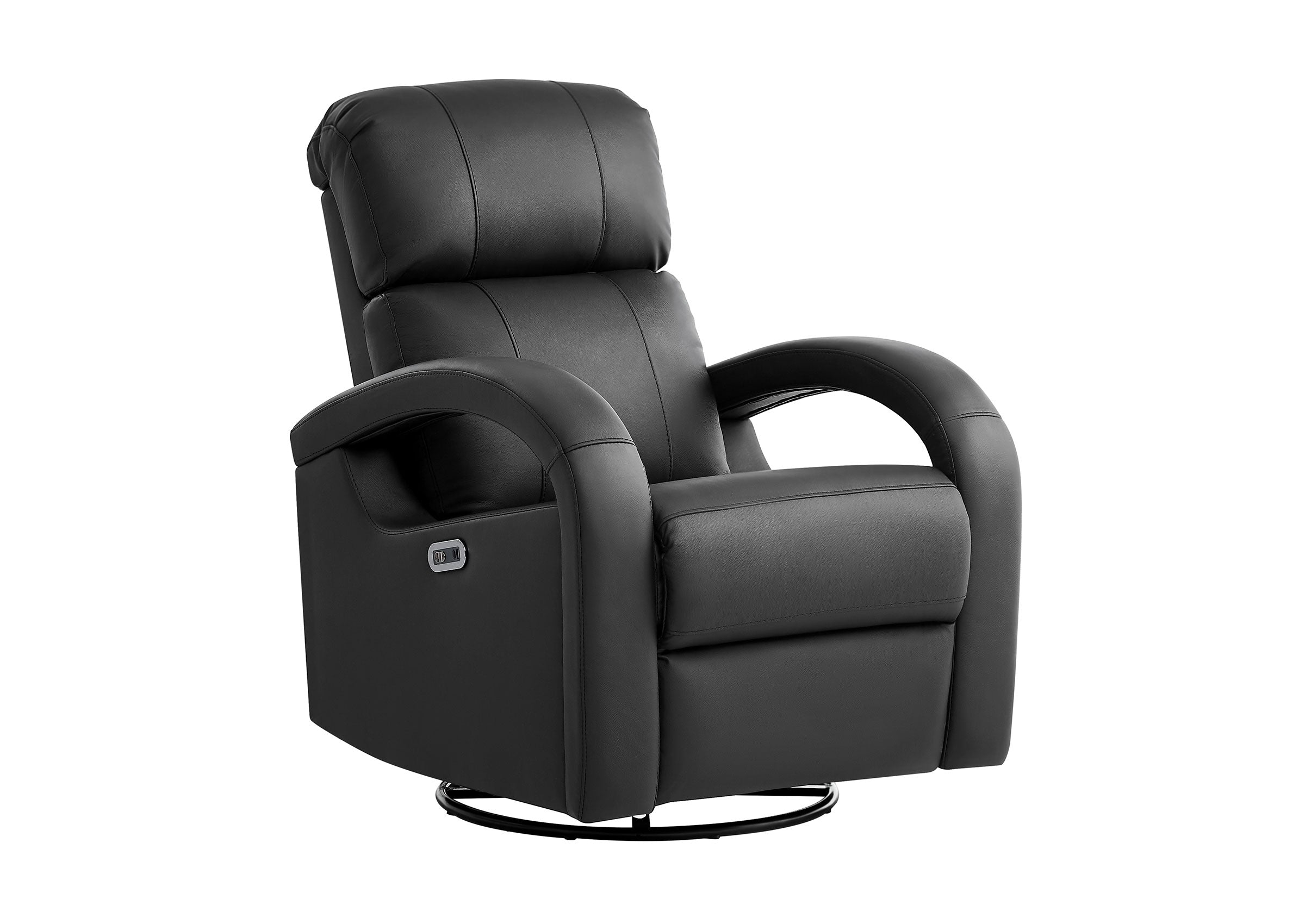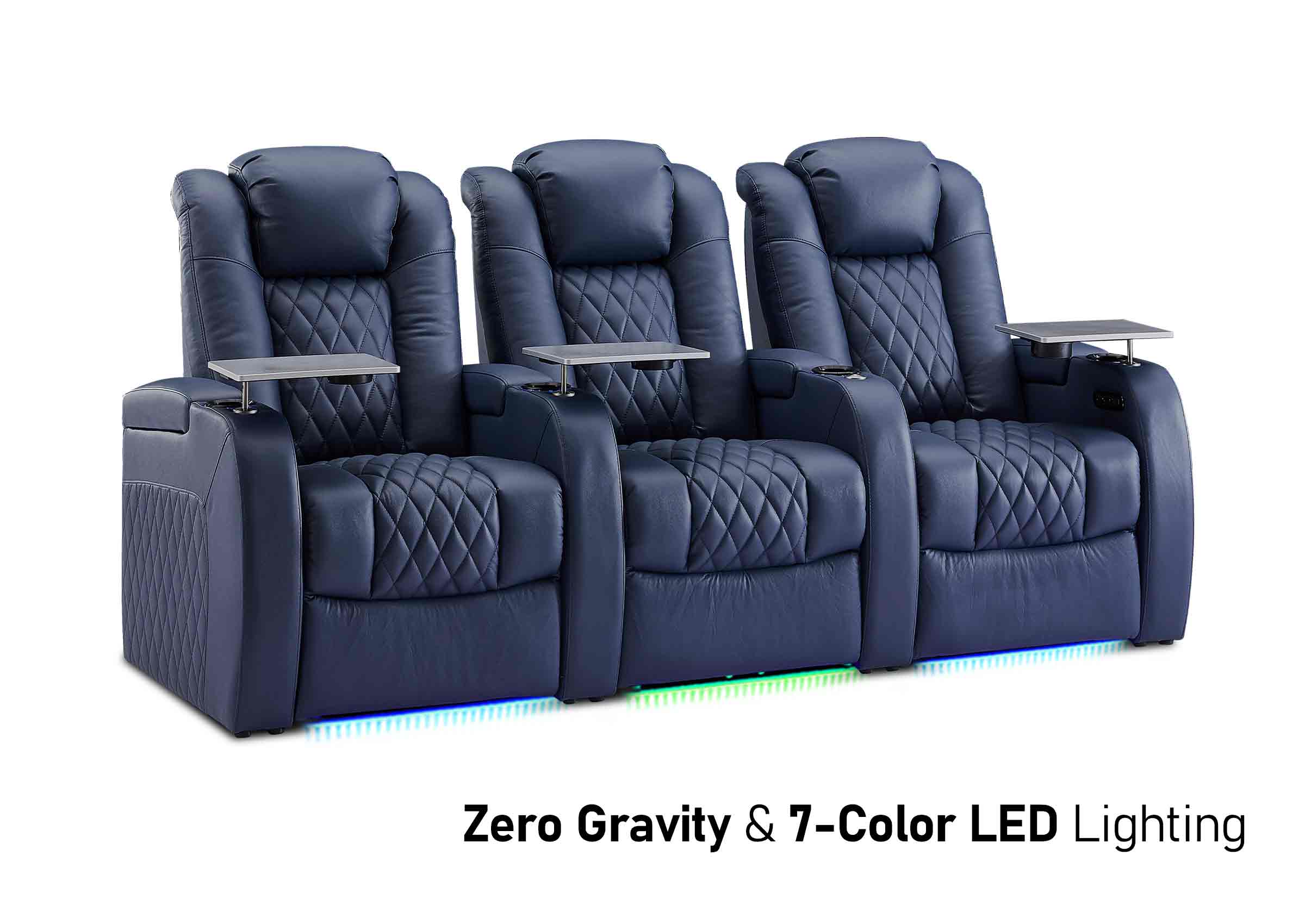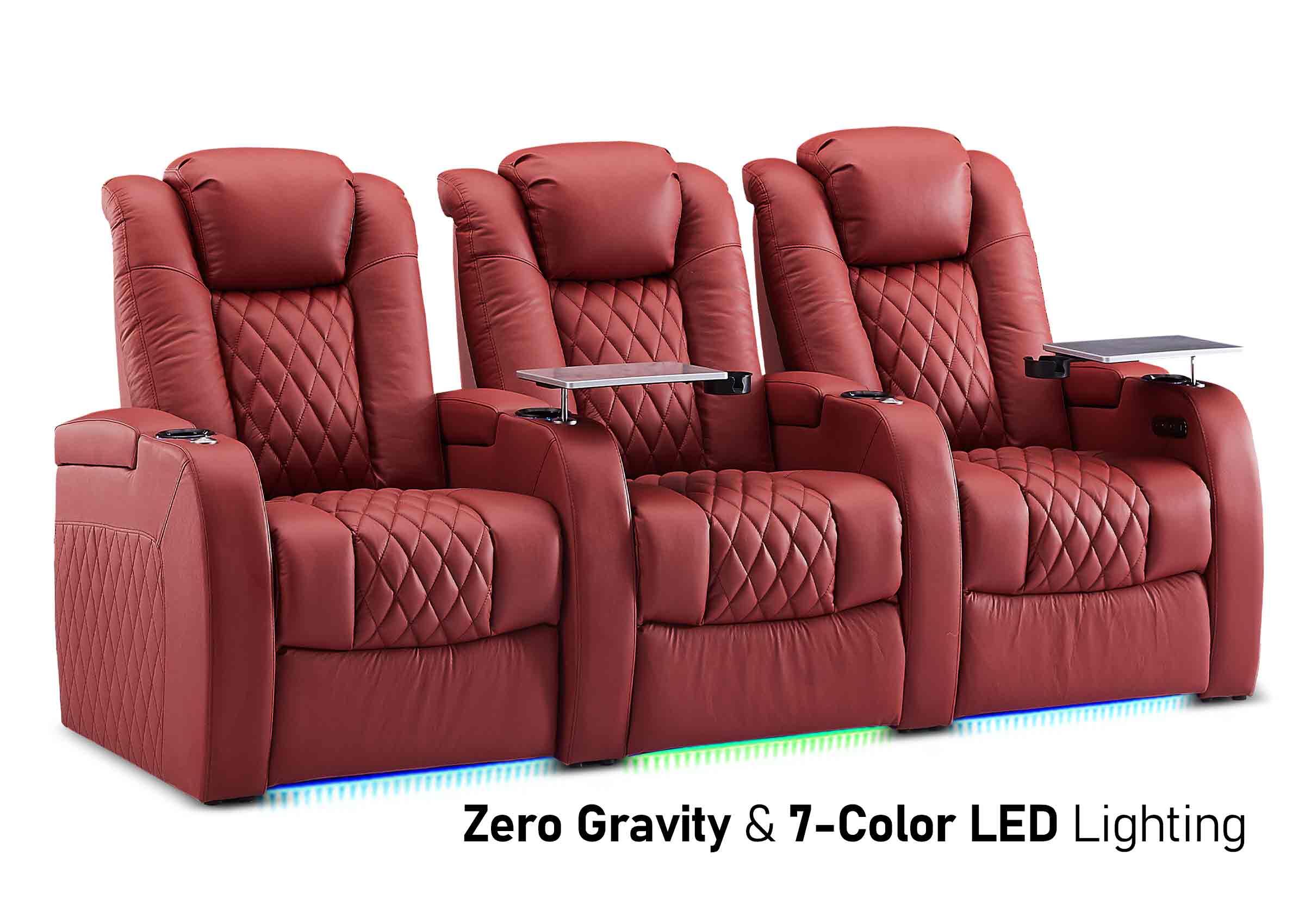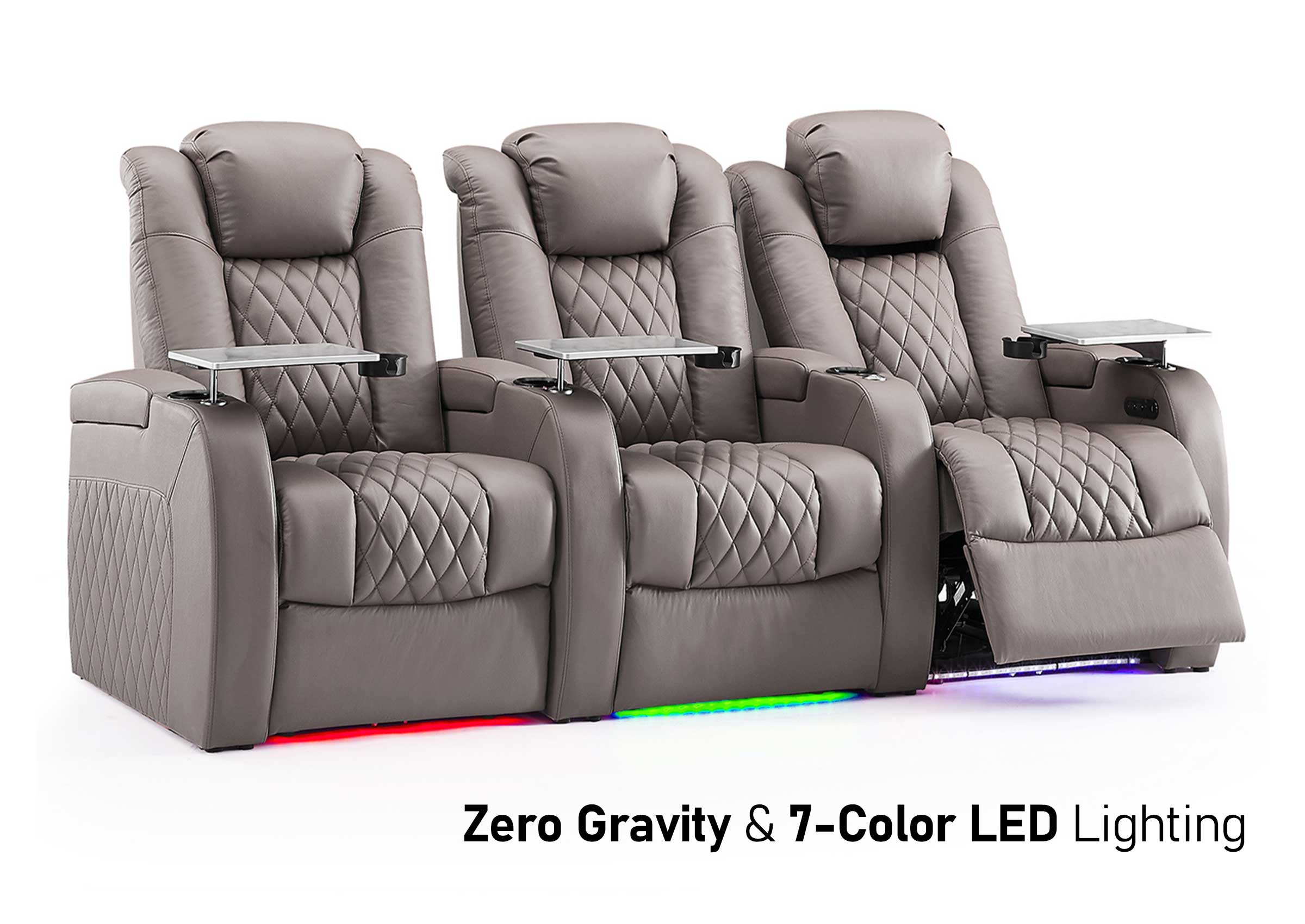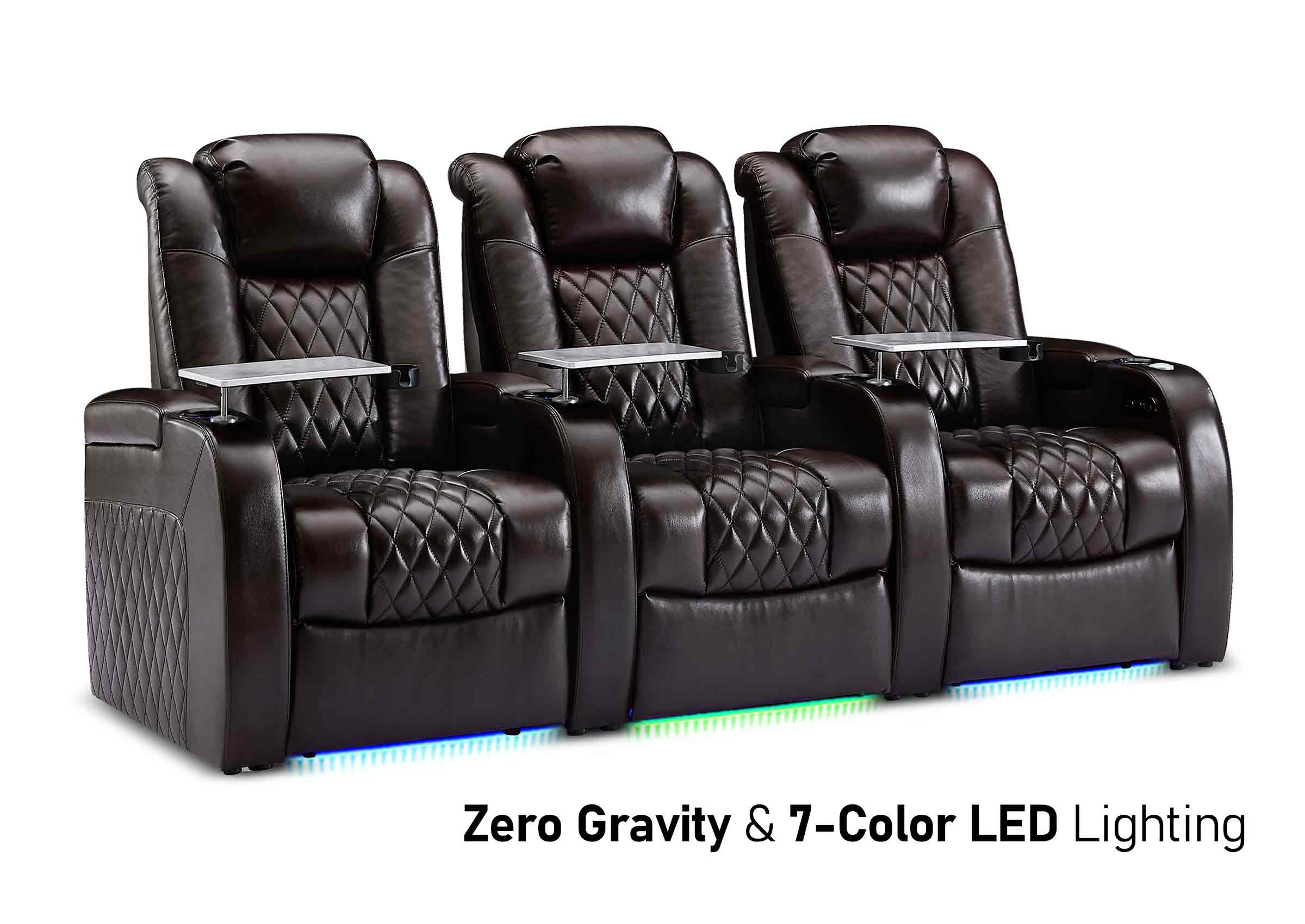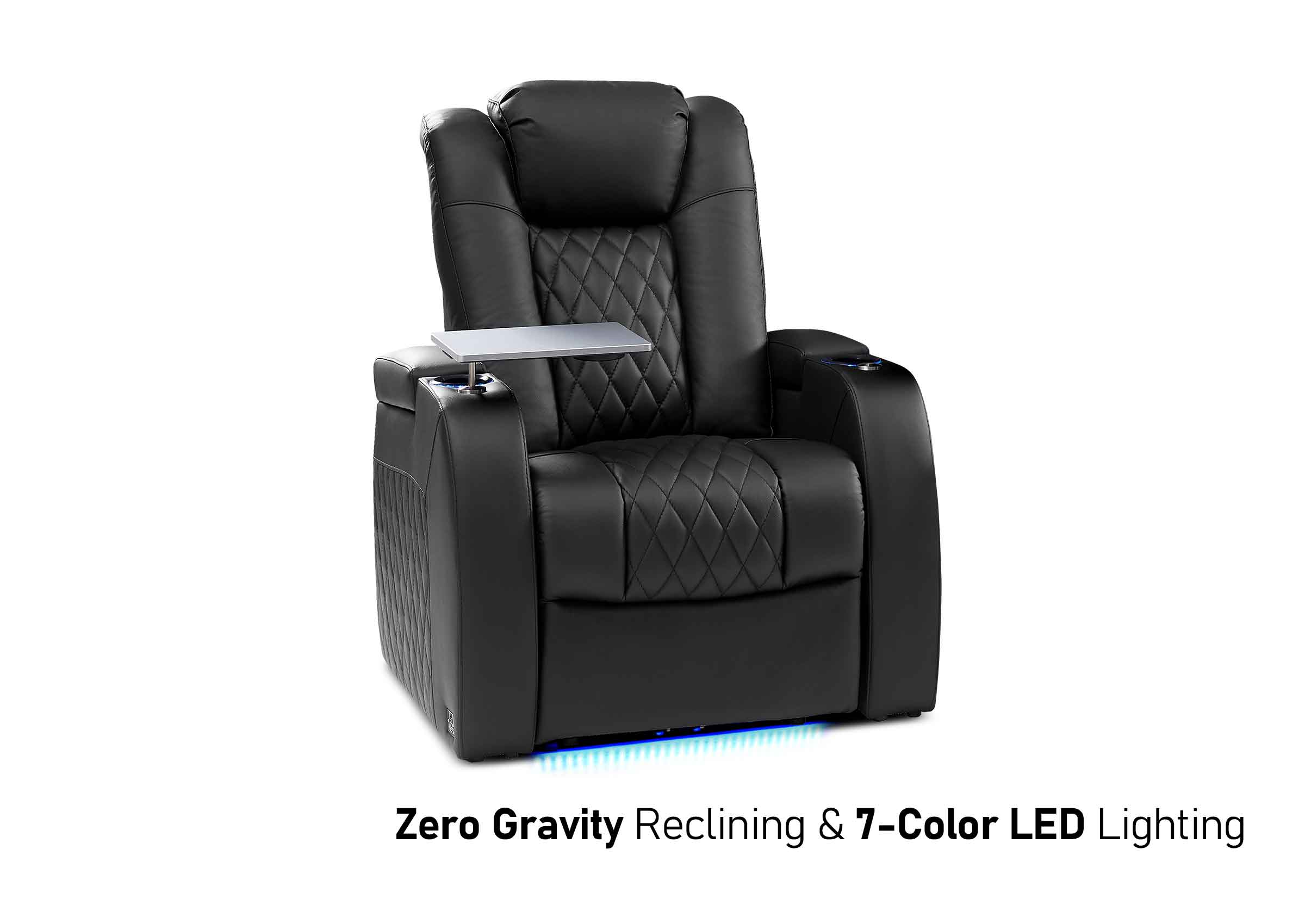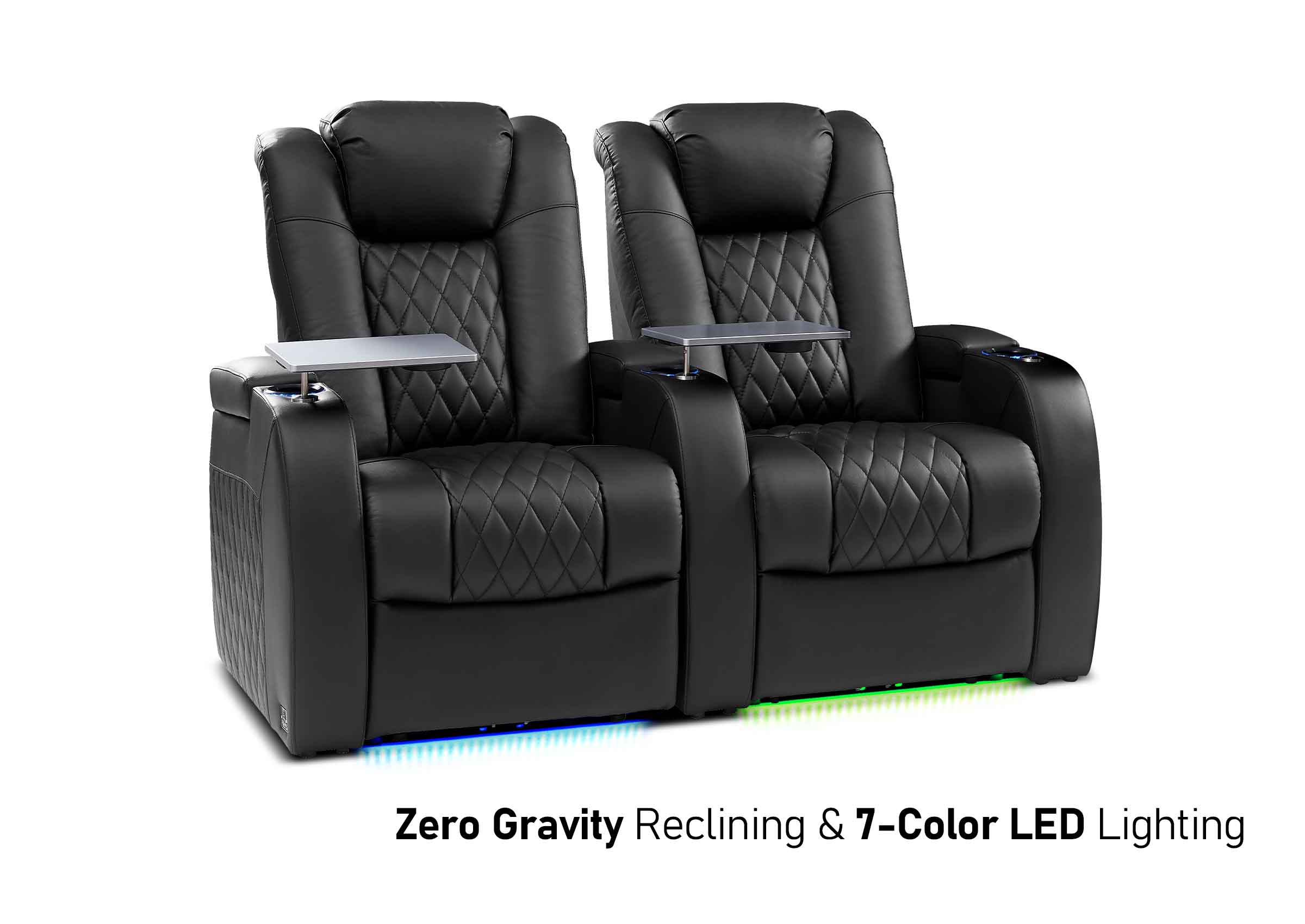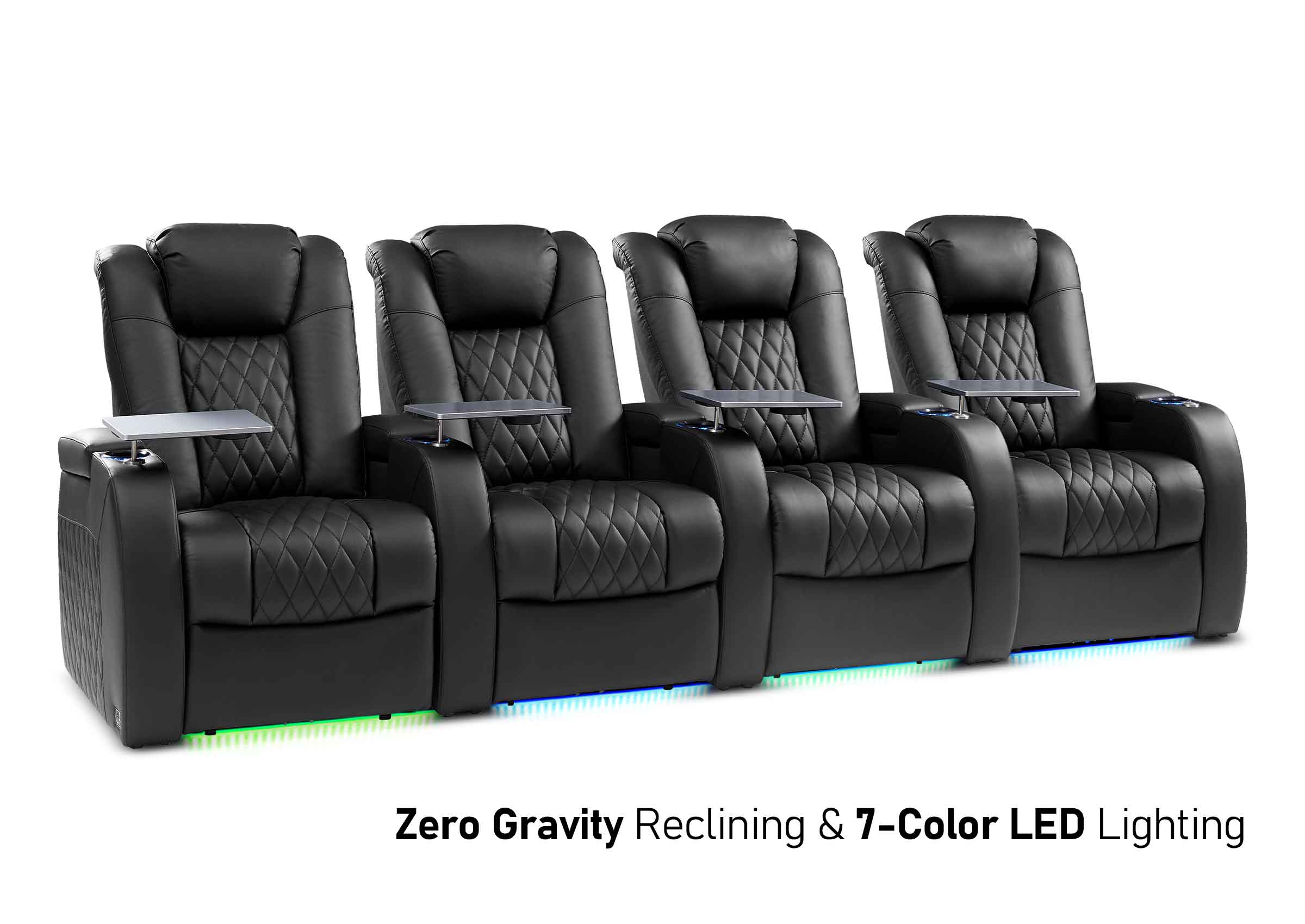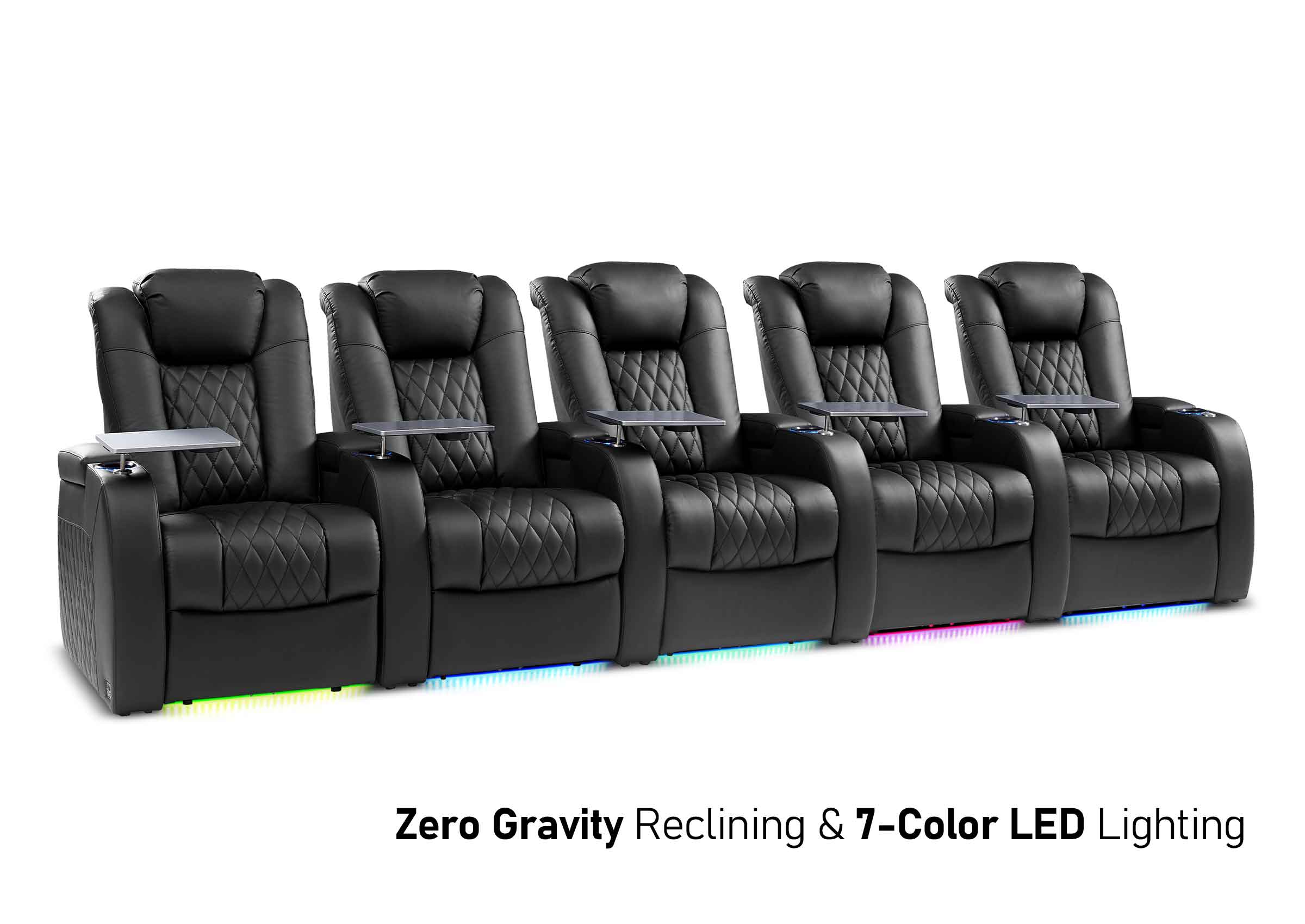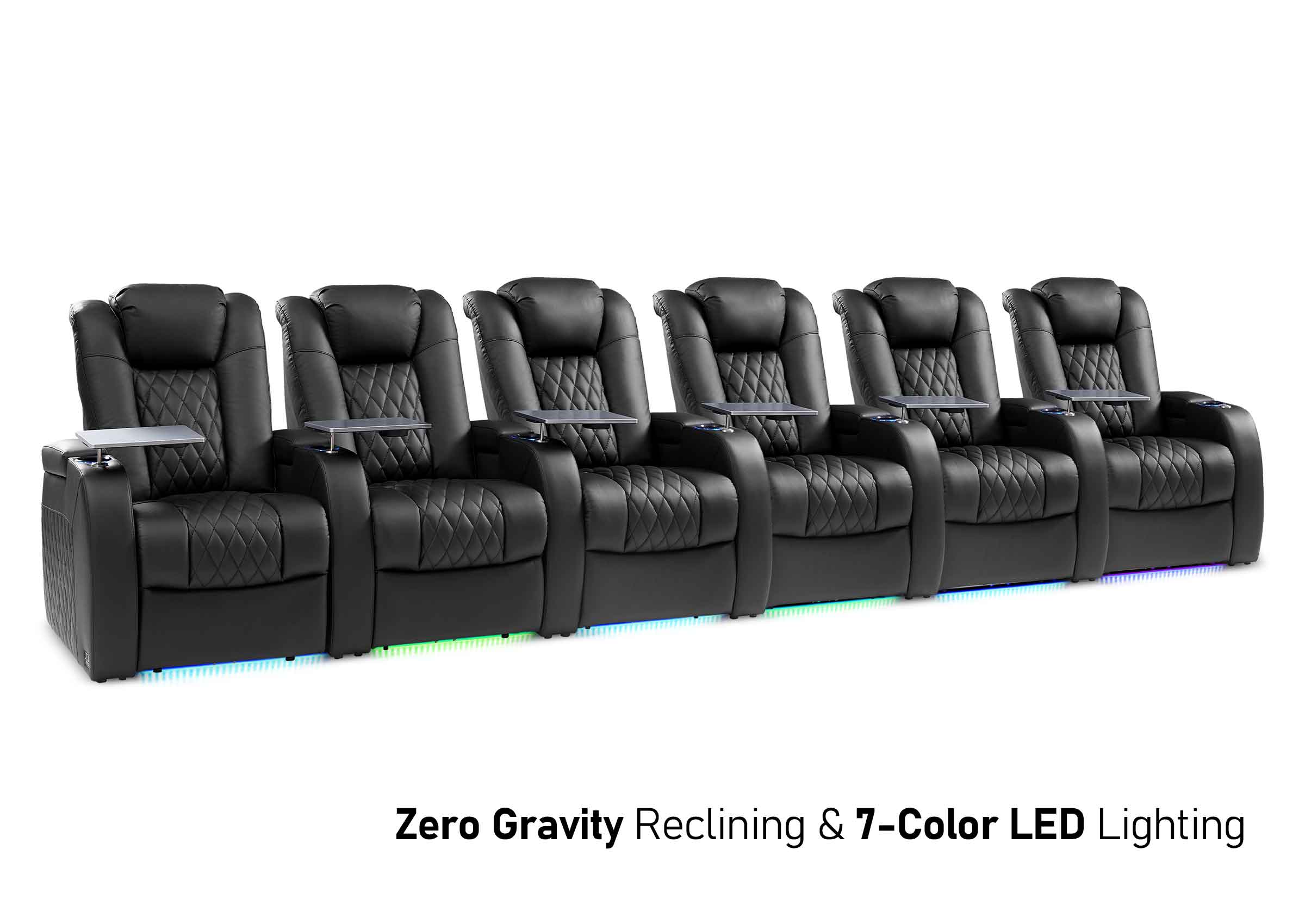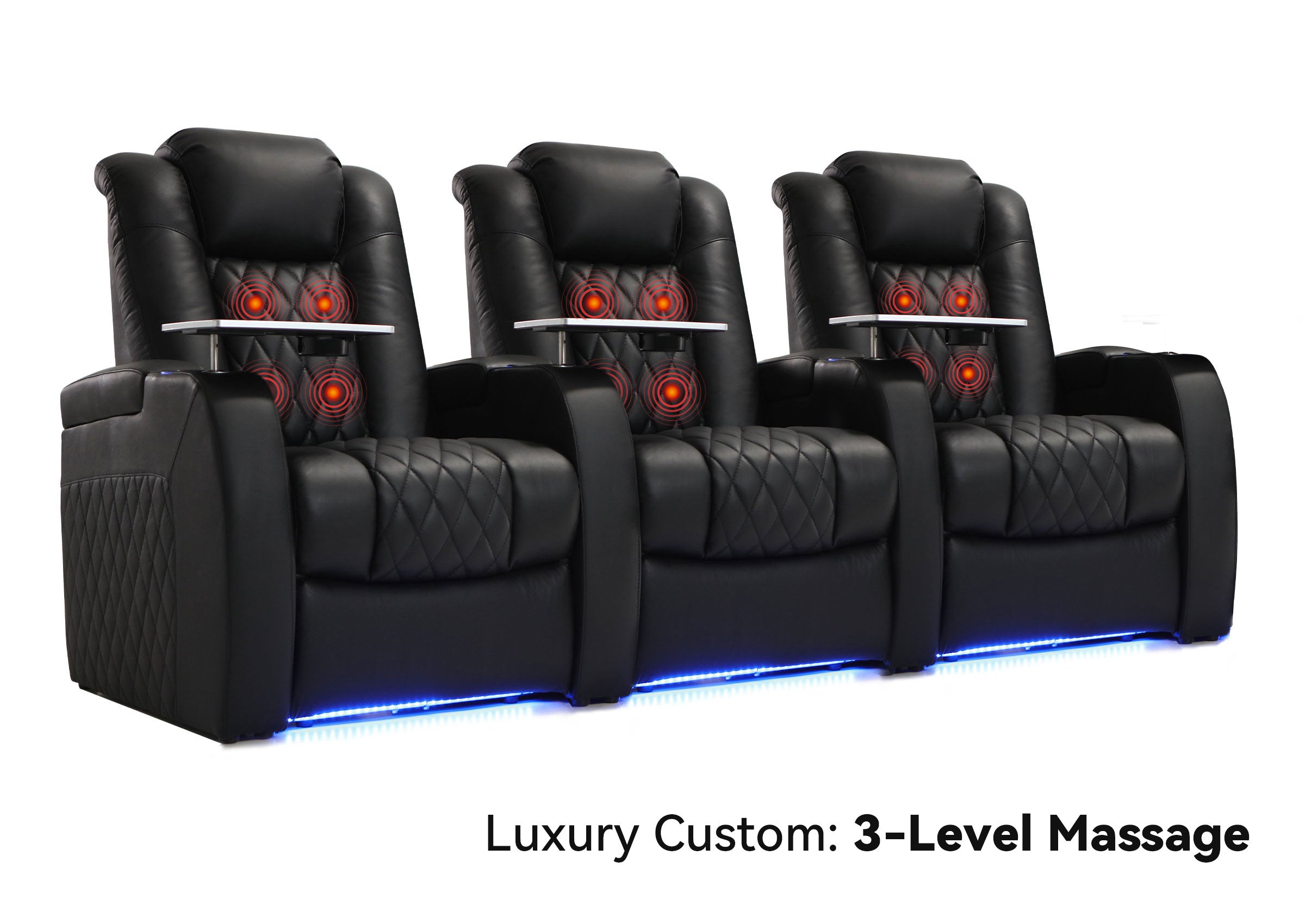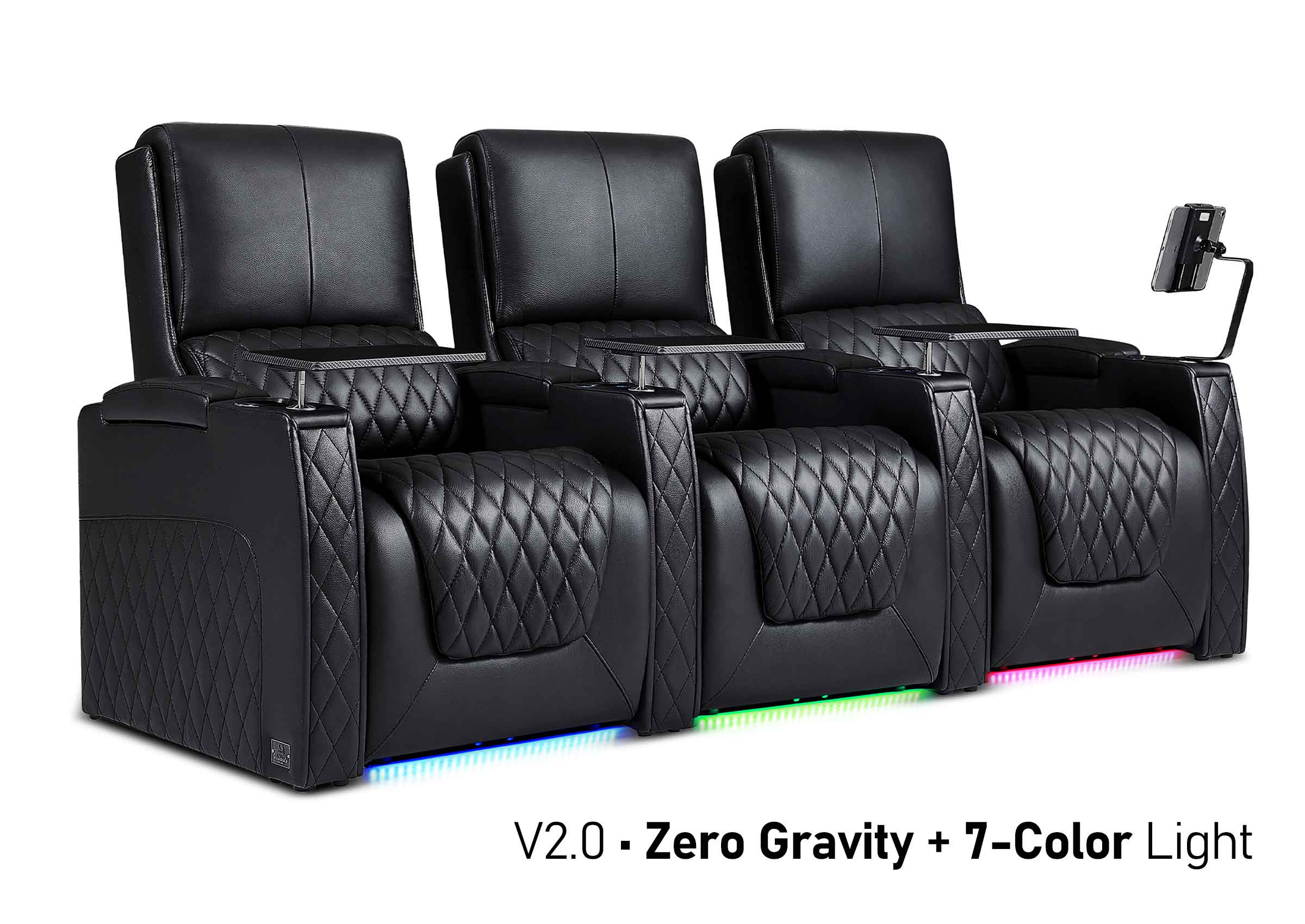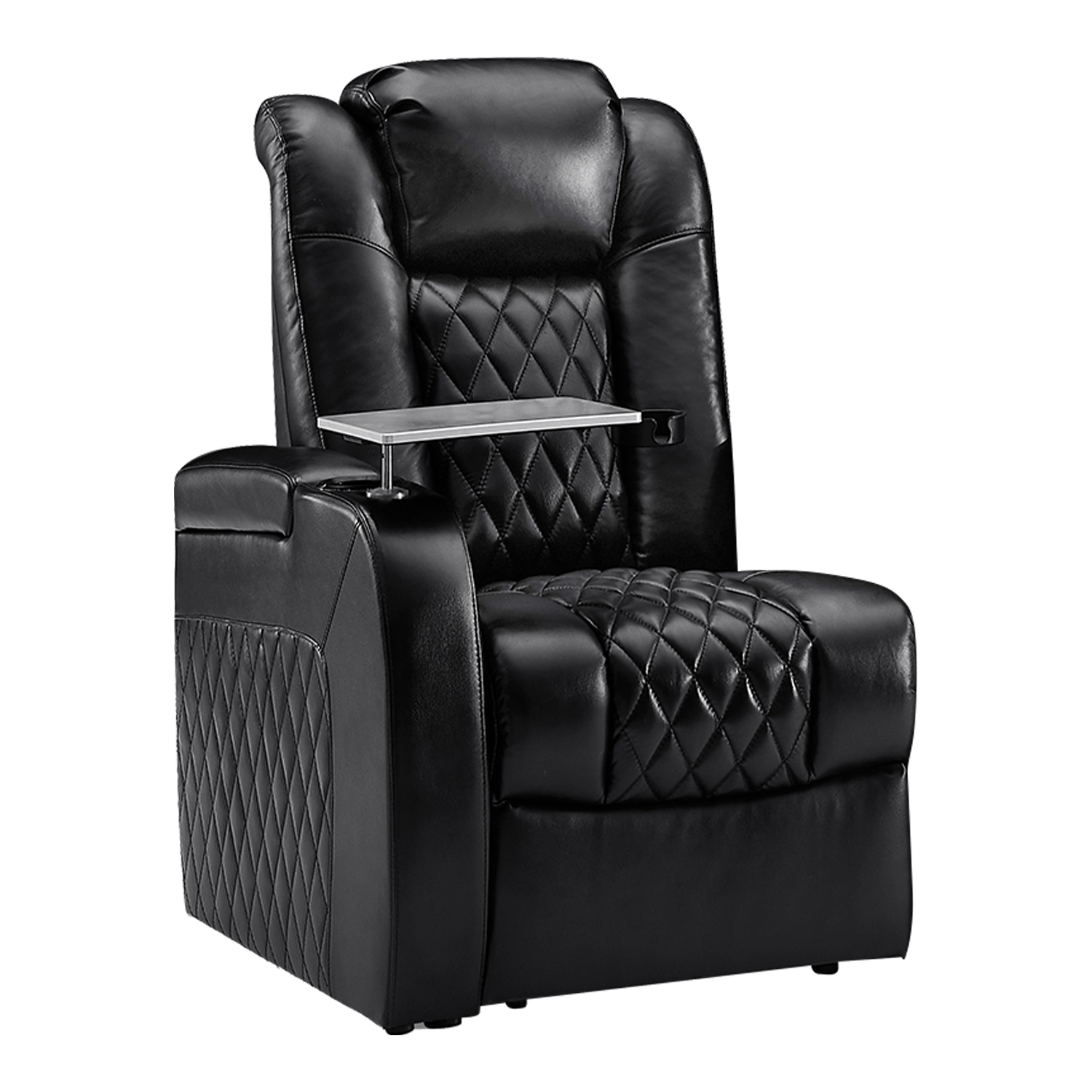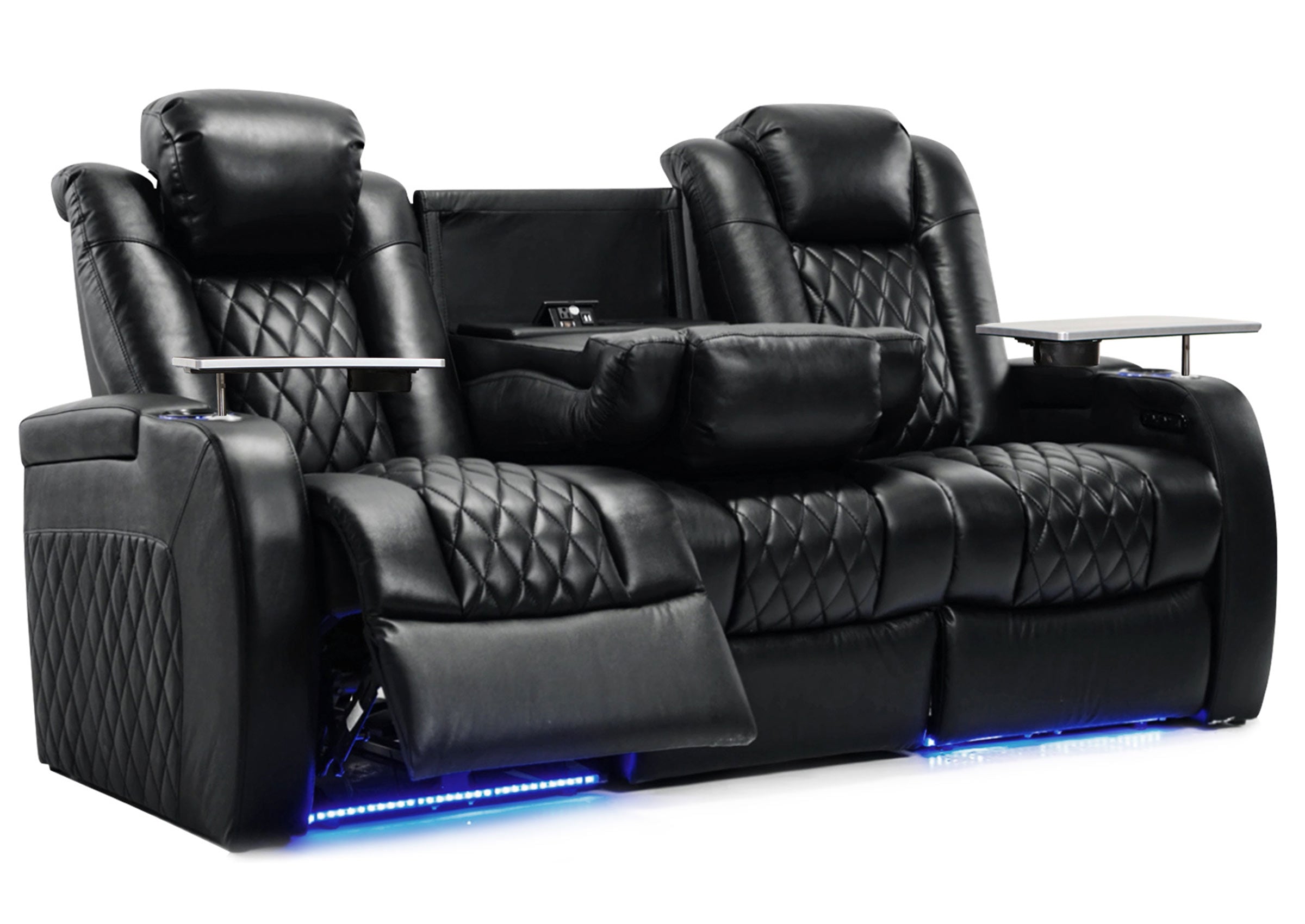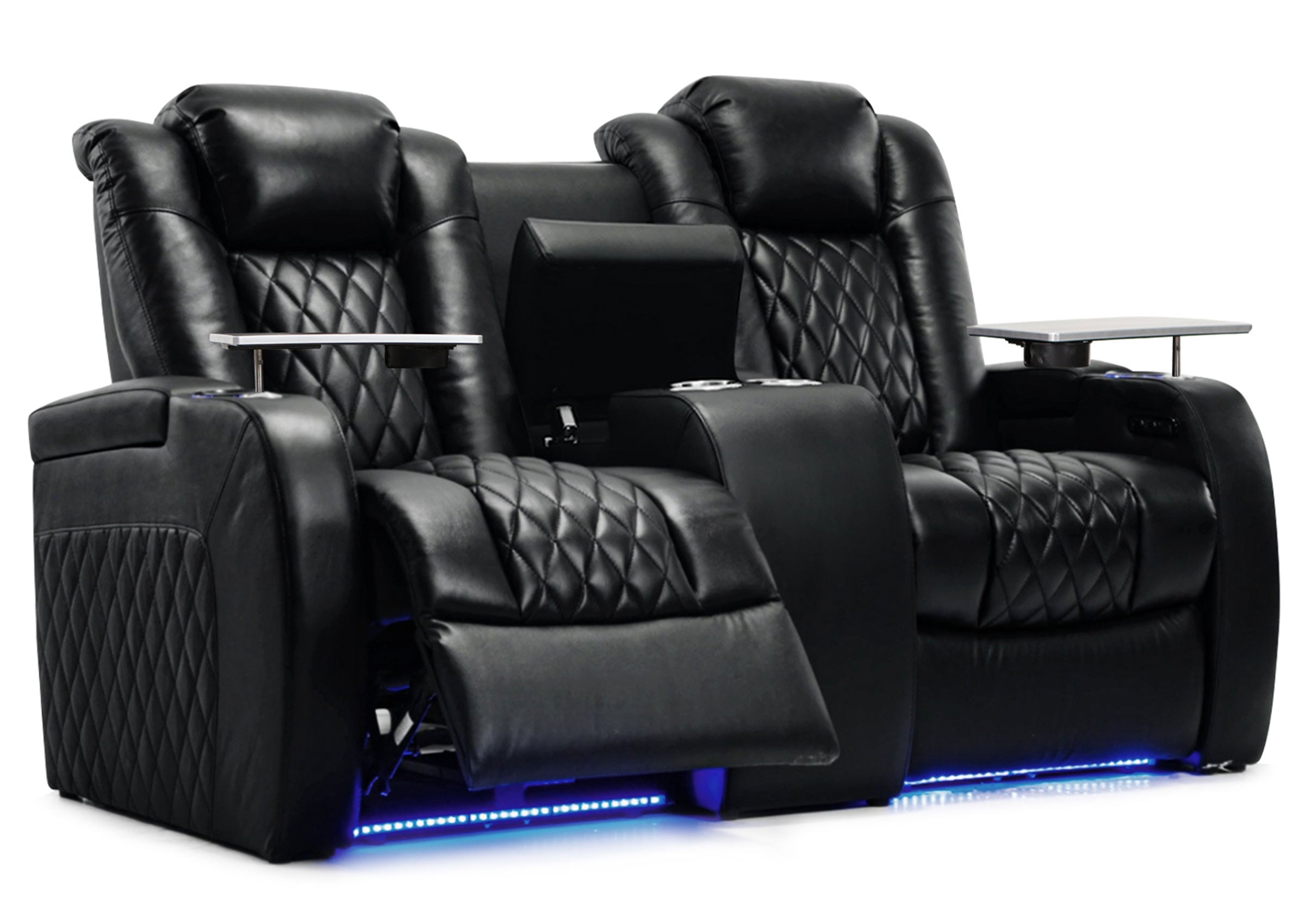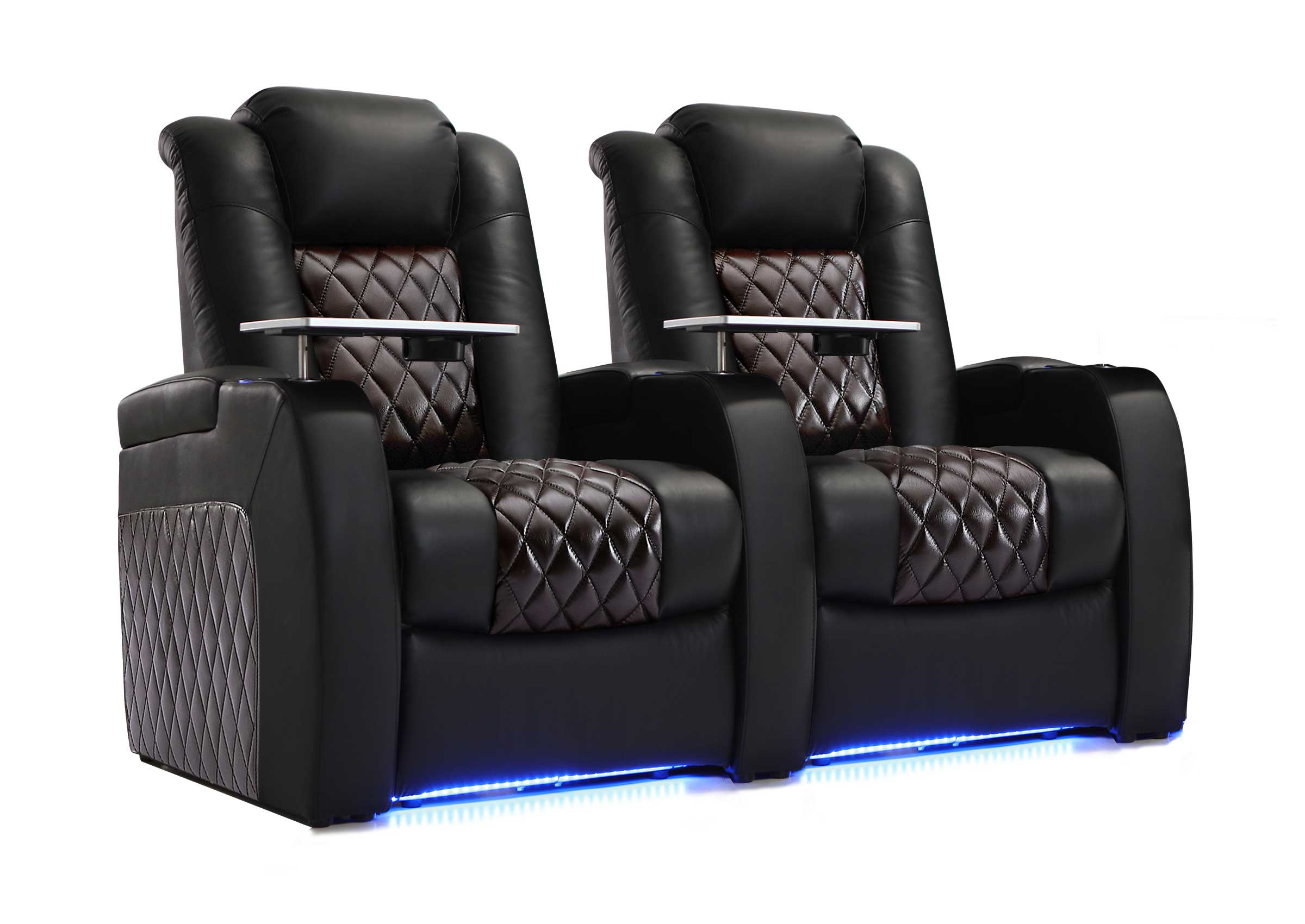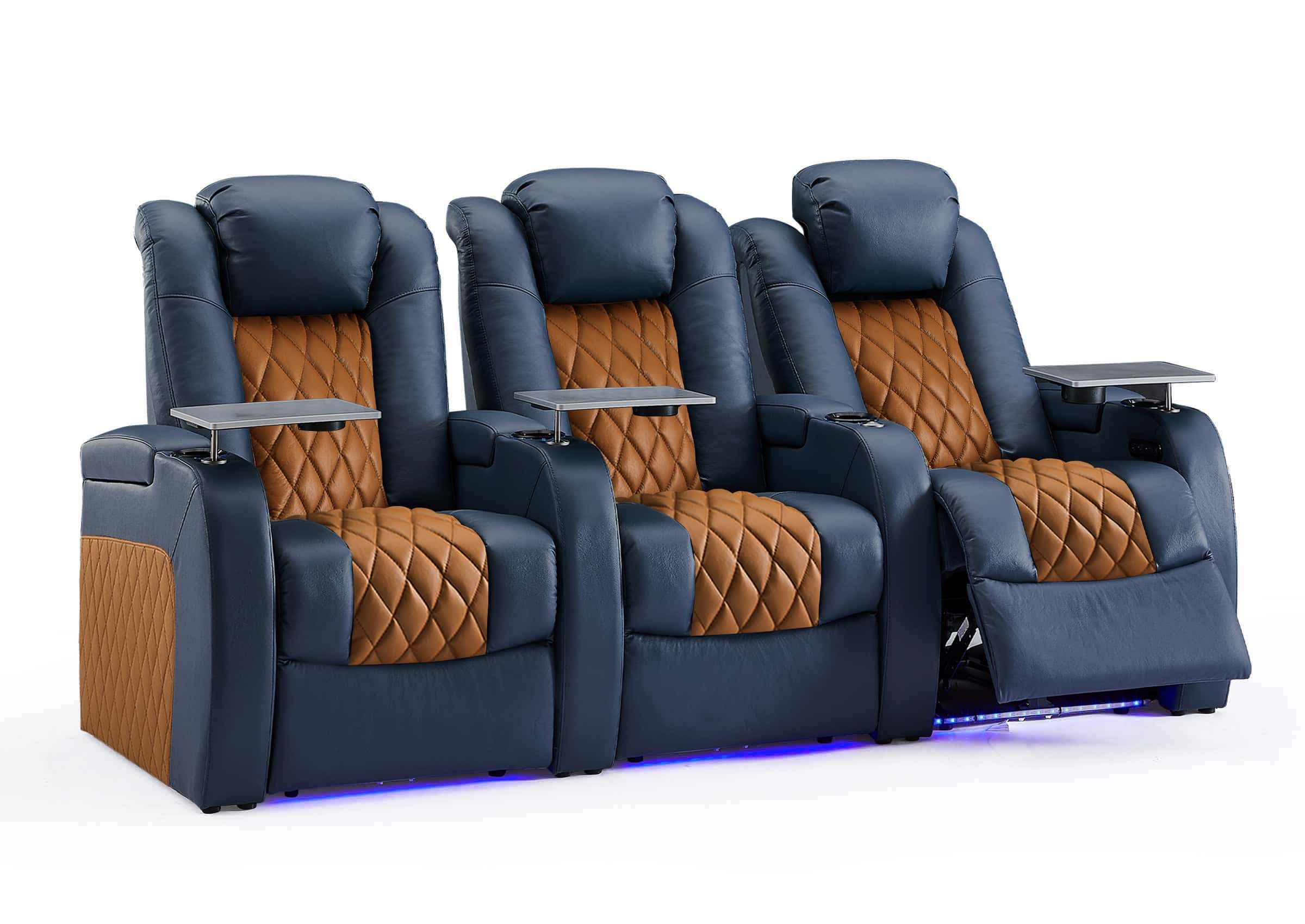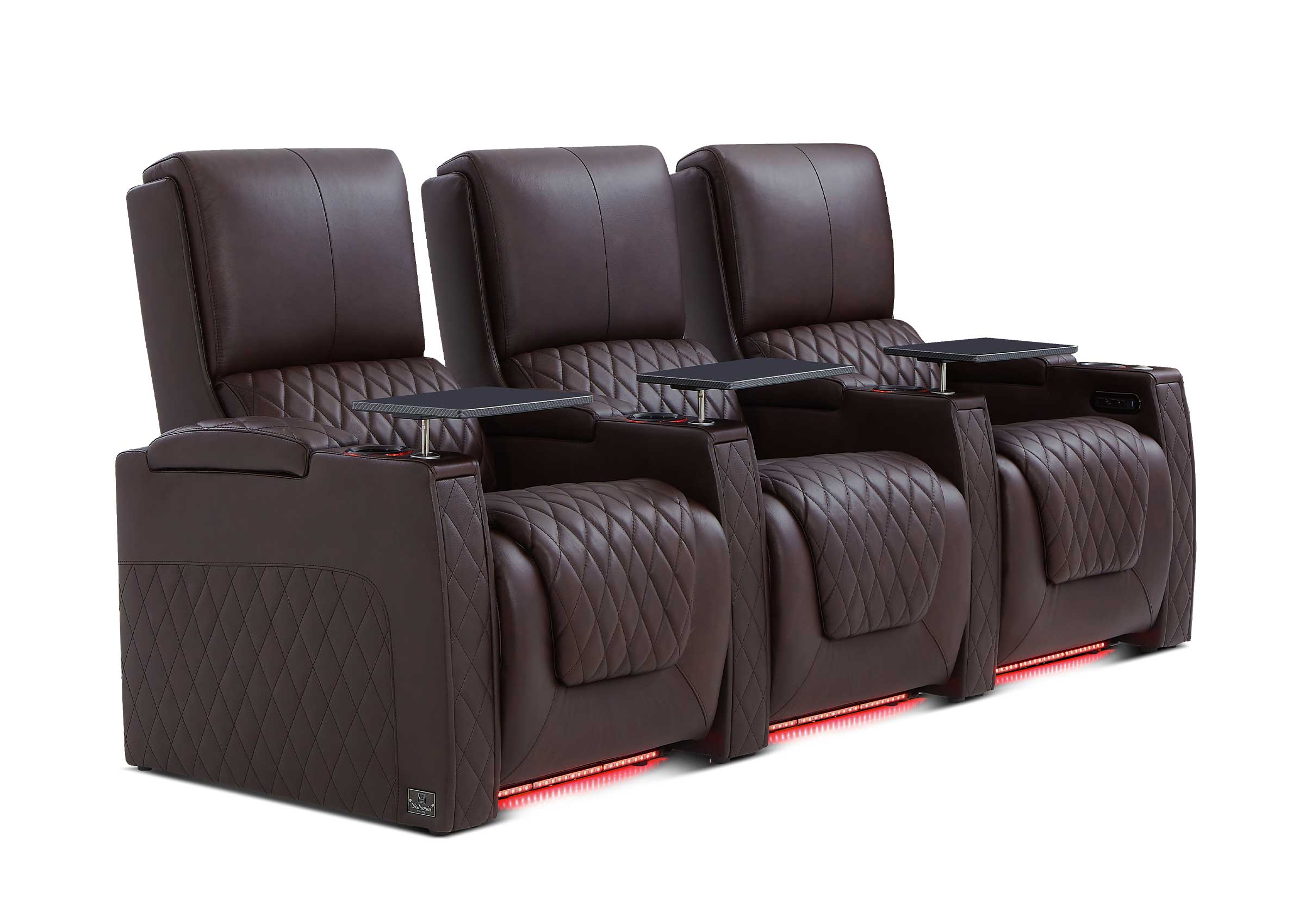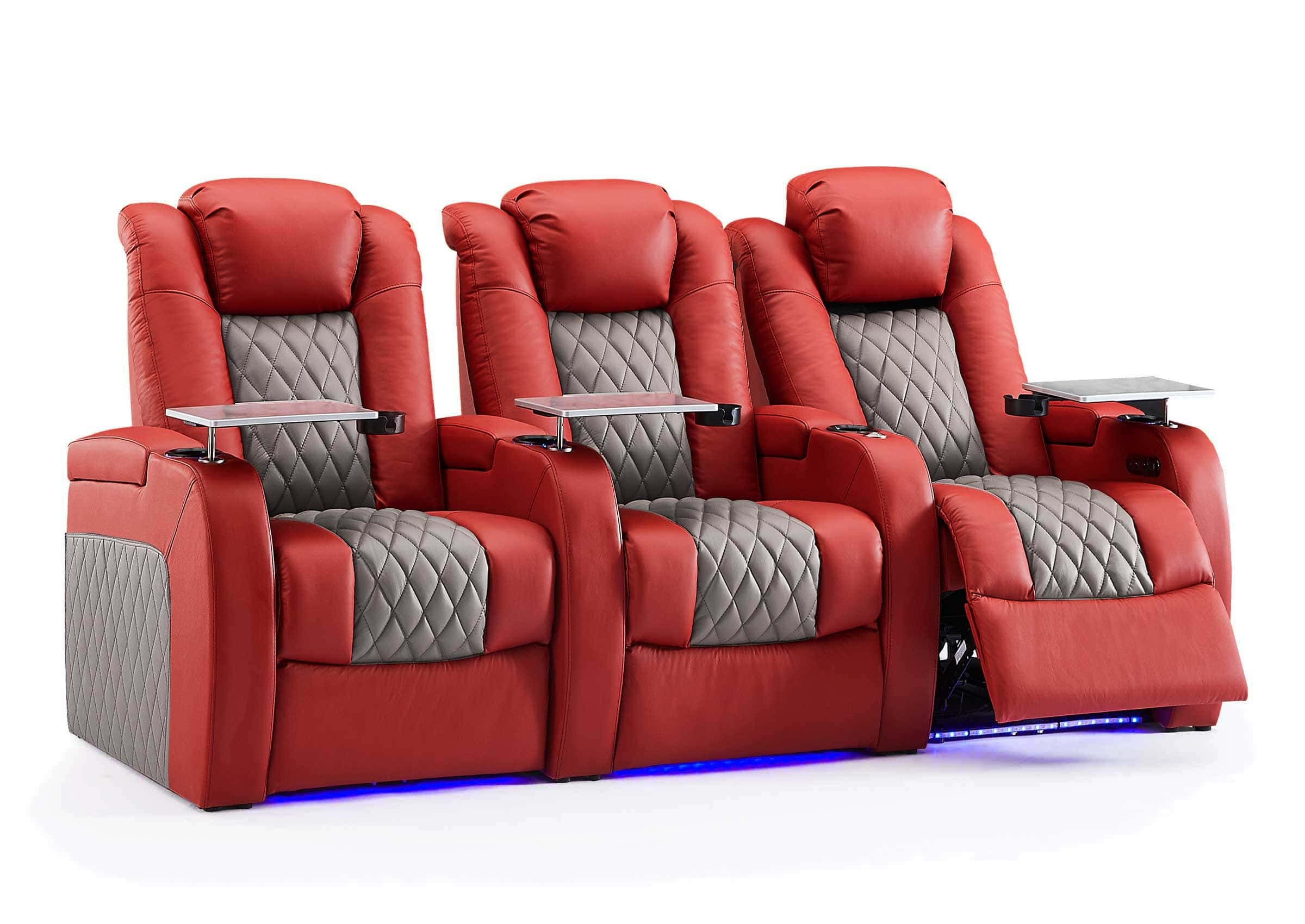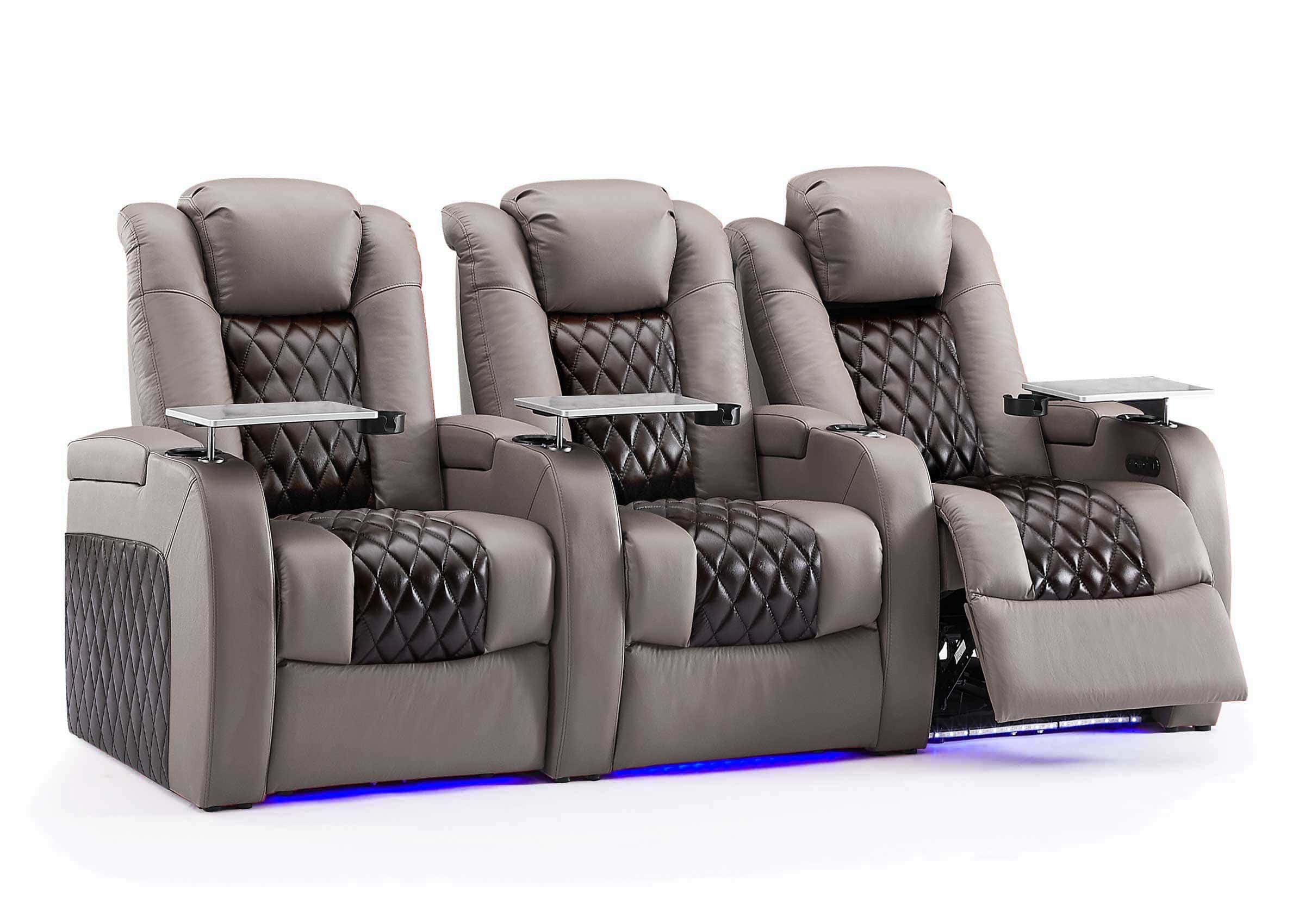
Home theater seating is a vital component of the home cinema experience. Quality seating enhances the viewing pleasure, offering comfort and enjoyment. This article delves into the factors to consider when designing a home theater and how to choose seating that suits various settings.
Factors to Consider in Home Theater Design
When designing a home theater, consider room size, purpose, and personal preferences, among other factors.
Seat Layout: The arrangement of seats is crucial for a comfortable viewing experience, preventing fatigue during long sessions. For instance, in a basement home theater with height and width constraints, you can't use stadium-style seats. If space is limited, consider replacing a row of four curved seats with a sectional sofa or a combination of home theater couches.

Seat Height and Angle: Adjust these for optimal screen visibility. The recommended viewing distance is 1.5 to 2.5 times the screen's diagonal length. For a 100-inch screen, the ideal range is 150 to 250 inches. To simplify this measurement process and ensure accuracy, you can use a TV viewing distance calculator. This distance can vary based on your setup and comfort. Even with an enviable projector and screen, discomfort from unsuitable seating can ruin the experience. For second-row seating, consider elevating seats or the floor for unobstructed viewing.


Material and Quality: High-quality materials and craftsmanship ensure comfort and durability, enhancing the movie experience.
Color and Style: Choose colors and styles that harmonize with the room's decor for a pleasing aesthetic.
Sound System Compatibility: A high-quality sound system creates an immersive auditory experience. Consider the sound system layout and performance when selecting seats, ensuring integration with the home theater system. Modern seats with smart features like automatic posture adjustment and temperature control cater to diverse needs, elevating the viewing experience.

Budget: Factor in your financial situation when selecting seats and equipment. High-value products can still offer a satisfactory viewing experience.
Choosing Suitable Home Theater Seats for Different Environments
Comfort in seating is influenced by material, filling, and design. For instance, leather seats are generally more comfortable than fabric ones, providing better support and shape retention. Fillings like memory foam or gel adjust to the user's body, offering personalized comfort. Modern seats with adjustable back and leg support cater to various postures and needs. Additional features like heating, ventilation, and massage functions enhance comfort and relaxation. Consider size, shape, and foldability/portability for small spaces, and larger or modular options for bigger areas. Match the seat's shape to the room's decor and personal preferences.
The best home theater seating for a dedicated, main level home theater:
- Stadium style home theatre seating
- 4 seat theater seating
- Home theater recliners on riser platforms
The best seating ideas for a basement home theater:
- Wall hugger theater seating
- Home theater sectionals
- Home theater loveseats
- Grey or white theater seating
The best media room furniture for a living room/media room:
- Home theater sectionals
- Theater loveseats
- Fabric home theater seating
- Home theater chaise lounge
- Brown leather theater seating
- Non leather, microfiber theater seating
The best choices for man cave seating:
- Racing style two tone leather seats
- Red theater seats
- DIY stadium seating on home theater risers
- Club-style plush brown theater seating
Comfort and Multifunctionality of Seats
Material and Design: The comfort of home theater seats is significantly influenced by their material and design. Leather seats, for example, often offer greater comfort compared to fabric ones, as they better support the body and reduce fatigue over long periods. The design of the seat, including adjustable headrests and lumbar pillows, can be tailored to individual height and comfort preferences.
Color and Style: The color and style of seats also impact the viewing experience. Some seats might feature a modern design in black or silver, complementing a cinema-like environment. Others might offer a cozier or retro feel, adding a unique atmosphere to the viewing experience.
Cleanliness and Maintenance: A clean, well-maintained seat enhances comfort, while a dirty one can be off-putting. Thus, choosing a seat that is easy to clean and maintain is important.
The Importance of Lumbar Support and Ergonomic Design

Lumbar Support: Essential for maintaining proper posture, lumbar support helps distribute body weight, reducing spinal pressure and avoiding discomfort from prolonged sitting. It also improves blood circulation, reducing the risk of conditions like varicose veins and edema.
Ergonomic Design: This design principle focuses on adapting the seat to fit the human body, enhancing comfort. It includes considerations like seat height, width, depth, and backrest angle. An ergonomic seat should accommodate users of different heights and weights, offering adequate head and neck support for taller individuals and ensuring shorter users aren't strained.
Weilianda Astronaut Series Zero Gravity Home Theater Seating,Suitable for couples, husband and wife to sit close together and watch the movie together.
Create a sense of weightlessness like space, and let the body and brain continue to relax as easily as floating clouds.
Accessories: Build-in Storage,Power Headrest,360° Rotating Table,Power Footrest,Type-C USB
In conclusion, choosing the right home cinema seats is crucial for an enhanced viewing experience. Consider room size, purpose, personal preferences, and the importance of comfort, multifunctionality, lumbar support, and ergonomic design in your selection.








